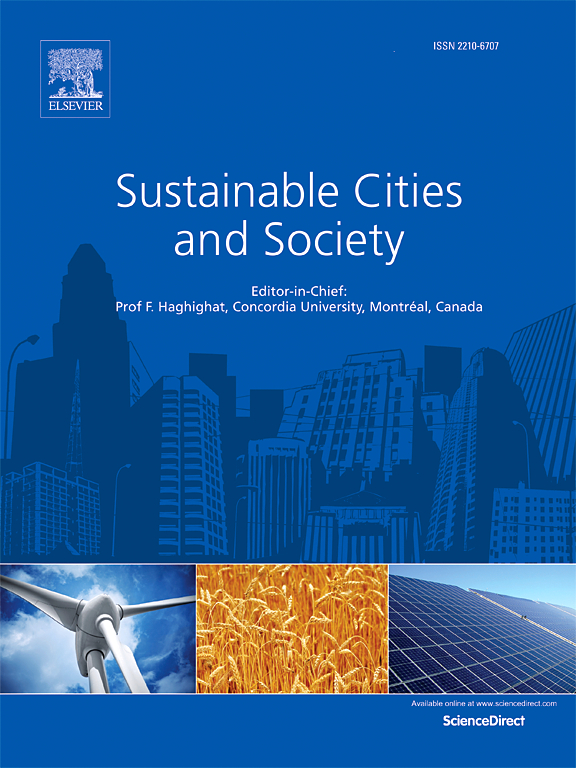Quantifying the combined and individual impacts of climate and human activity on the urban green space carbon sink capacity in Beijing
IF 10.5
1区 工程技术
Q1 CONSTRUCTION & BUILDING TECHNOLOGY
引用次数: 0
Abstract
Urban green space plays a crucial role in mitigating climate change through enhancing the carbon sink and ecosystem services in urban areas. Understanding how vegetation responds to both climate and human activity in urban areas is essential for effective green space planning. Despite the existence of large-scale studies examining the effects of climate change and human activity on green space, the specific mechanisms driving the Urban Green Space Carbon Sink Capacity (UGCSC) across different urban functional zones remain unclear. The present study used boosted regression trees and structural equation models to investigate the spatiotemporal dynamics of the UGCSC in Beijing from 2000 to 2020 and to assess the relative contributions of climatic factors and human activity to the UGCSC. The findings indicate that the UGCSC increased by 74.2 % of the study area, with 50.7 % of the change driven primarily by human activity, 24.6 % by climate change, and 24.8 % by their combined effects. Key drivers such as elevation, slope, temperature, and Landscape Shape Index showed varying effects across different functional zones. Climatic factors exhibited significant spatial heterogeneity, with temperature being the most influential, contributing 47.2 % to the UGCSC in central urban areas. Conversely, human activity had a dual impact: it reduced UGCSC in densely urbanized zones due to socioeconomic pressures, while landscape connectivity and green space coverage enhanced UGCSC in development and ecological zones. These insights provide a scientific basis for promoting nature-based solutions and guiding sustainable urban planning with the goal of moving toward carbon neutrality.
求助全文
约1分钟内获得全文
求助全文
来源期刊

Sustainable Cities and Society
Social Sciences-Geography, Planning and Development
CiteScore
22.00
自引率
13.70%
发文量
810
审稿时长
27 days
期刊介绍:
Sustainable Cities and Society (SCS) is an international journal that focuses on fundamental and applied research to promote environmentally sustainable and socially resilient cities. The journal welcomes cross-cutting, multi-disciplinary research in various areas, including:
1. Smart cities and resilient environments;
2. Alternative/clean energy sources, energy distribution, distributed energy generation, and energy demand reduction/management;
3. Monitoring and improving air quality in built environment and cities (e.g., healthy built environment and air quality management);
4. Energy efficient, low/zero carbon, and green buildings/communities;
5. Climate change mitigation and adaptation in urban environments;
6. Green infrastructure and BMPs;
7. Environmental Footprint accounting and management;
8. Urban agriculture and forestry;
9. ICT, smart grid and intelligent infrastructure;
10. Urban design/planning, regulations, legislation, certification, economics, and policy;
11. Social aspects, impacts and resiliency of cities;
12. Behavior monitoring, analysis and change within urban communities;
13. Health monitoring and improvement;
14. Nexus issues related to sustainable cities and societies;
15. Smart city governance;
16. Decision Support Systems for trade-off and uncertainty analysis for improved management of cities and society;
17. Big data, machine learning, and artificial intelligence applications and case studies;
18. Critical infrastructure protection, including security, privacy, forensics, and reliability issues of cyber-physical systems.
19. Water footprint reduction and urban water distribution, harvesting, treatment, reuse and management;
20. Waste reduction and recycling;
21. Wastewater collection, treatment and recycling;
22. Smart, clean and healthy transportation systems and infrastructure;
 求助内容:
求助内容: 应助结果提醒方式:
应助结果提醒方式:


